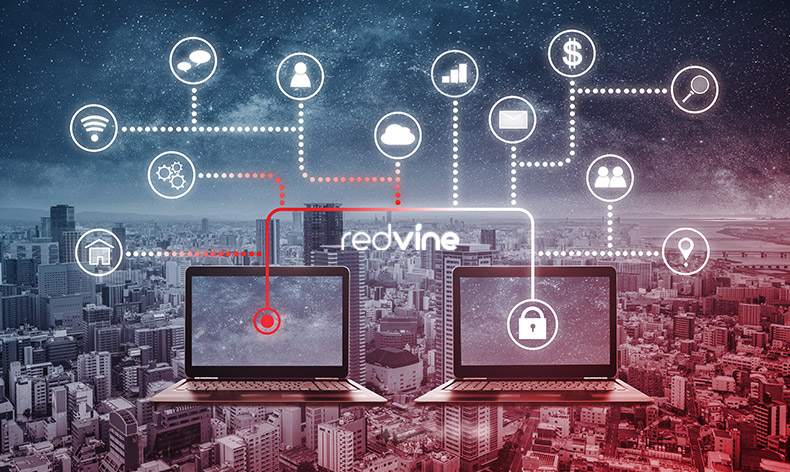Leveraging SASE and AI for enhanced network security
Morne Vermeulen and Wesley van Rayne at Redvine Networks
In today’s dynamic operating environment, businesses need to adapt to the evolving demands of remote work, distributed teams, and cloud-based services. Secure Access Service Edge (SASE) offers a more secure and reliable way for organisations to extend their WAN VPN environment, while embracing the flexibility of the cloud. In this article, we examine how artificial intelligence (AI) can unlock the benefits of SASE to empower local businesses to improve network security, efficiency, and flexibility.
Integration insights
Fundamentally, SASE enables services to be delivered via cloud-based orchestration platforms. This facilitates traffic flows between security, WAN, cloud, and endpoint devices. Furthermore, it empowers organisations to more easily add or remove services in a modular way to enhance their internal efficiencies without compromising on network security. Integrating AI into SASE solutions further enhances the platform’s capabilities, enabling real-time analysis of network traffic, proactive threat detection, and optimised application performance.
With AI-powered SASE solutions in place that can seamlessly integrate with endpoint security and SD-WAN platforms, organisations can unify security features and network management under a single platform. As a result, companies can ensure consistent security across all devices, applications, and services, regardless of the user’s location.
But more than that, AI facilitates the application of deep learning-based natural language processing and computer vision techniques to the network layer. In doing so, organisations can automatically detect sensitive and personal data such as financial and legal documents and source code in network traffic.
Images are increasingly critical digital assets in businesses, and the ability to quickly, and securely denoise these and more easily and accurately recognise and interpret the pixels is becoming a business necessity. AI-based methods recognise and filter out noise without compromising important image details, and use machine learning and advanced algorithms to understand the underlying true image pixels.
Amongst other things, this gives companies additional information to better comply with privacy regulations as they strengthen their security stance around their digital assets across the network environment.
The power of AI-driven SASE
Of course, there are additional benefits of going the AI route for SASE implementations:
- Simplified cloud transition: SASE makes transitioning to the cloud easier by providing increased flexibility to adapt to organisational needs. It is important to partner with an experienced provider who understands the specific business requirements and who is able to deliver a non-disruptive integration of SASE into existing infrastructures.
- Enhanced security: With traffic patterns shifting towards cloud environments and users accessing services from various devices and locations, securing enterprise data becomes more complex. AI-driven SASE solutions can identify and respond to potential threats in real-time, ensuring consistent security across the entire network.
- Improved visibility and control: By delivering integration into cloud products, SASE solutions provide better visibility and less disruption to existing infrastructure. Businesses can maintain focus on realising their core strategic objectives without needing to overhaul existing systems.
- Scalability: SASE enables organisations to easily expand their networks to the public cloud without the need for cumbersome on-premises devices. This allows for a more scalable and agile network infrastructure, which can adapt to the changing needs of the business.
Safety first
The traditional on-premises, appliance-based approach to security is no longer effective in a world where people connect to corporate networks from various geographic locations using an array of devices. SASE solutions address these challenges by offering cloud-delivered security services and securely transporting traffic to these services using on-site and on-device SD-WAN technology.
The key difference between a standalone security setup and a SASE security setup is that all components (security, access, and SDN) are delivered via orchestration platforms. These platforms integrate seamlessly in the back-end, combining multiple products into a single SASE solution.
An example of this is the introduction of embedded user and entity behaviour analytics. These analytics consist of trained models that can differentiate normal behaviour patterns on the network from patterns that originate from disgruntled employees, compromised accounts, and ransomware attacks.
In imaging terms, AI algorithms are used to distinguish noisy pixels and underlying true image pixels, to identify actual content and separate it out from the noise. At the same time, the algorithm applies filtering and restoration techniques to preserve important details of the image.
Power up through AI
SASE, when combined with AI, offers organisations a robust solution to address network security, access, and efficiency challenges in a distributed work environment. As cyber threats become more advanced, SASE solutions provide a powerful tool for businesses to fortify their defences and enhance network performance.
For instance, AI can be used to power several malware detection engines. These can encompass static and dynamic analysis of the threat environment, and when integrated with a traditional cybersecurity solution, significantly improve malware detection to enable companies to remain on top of the rapidly evolving threat landscape.
AI can also be used to train language models to classify things such as Web content and URLs to better manage security policies and filter traffic of sensitive or potentially harmful information. In this instance, AI models can be trained to become more effective at classifying phishing content. The result is an AI model that can assist with detecting and blocking suspicious sites in real-time before the traffic enters the network.
Embracing AI-driven SASE solutions is a critical step for organisations looking to adapt to the rapidly changing networking landscape and ensure a secure, flexible, and efficient work-from-anywhere environment.


